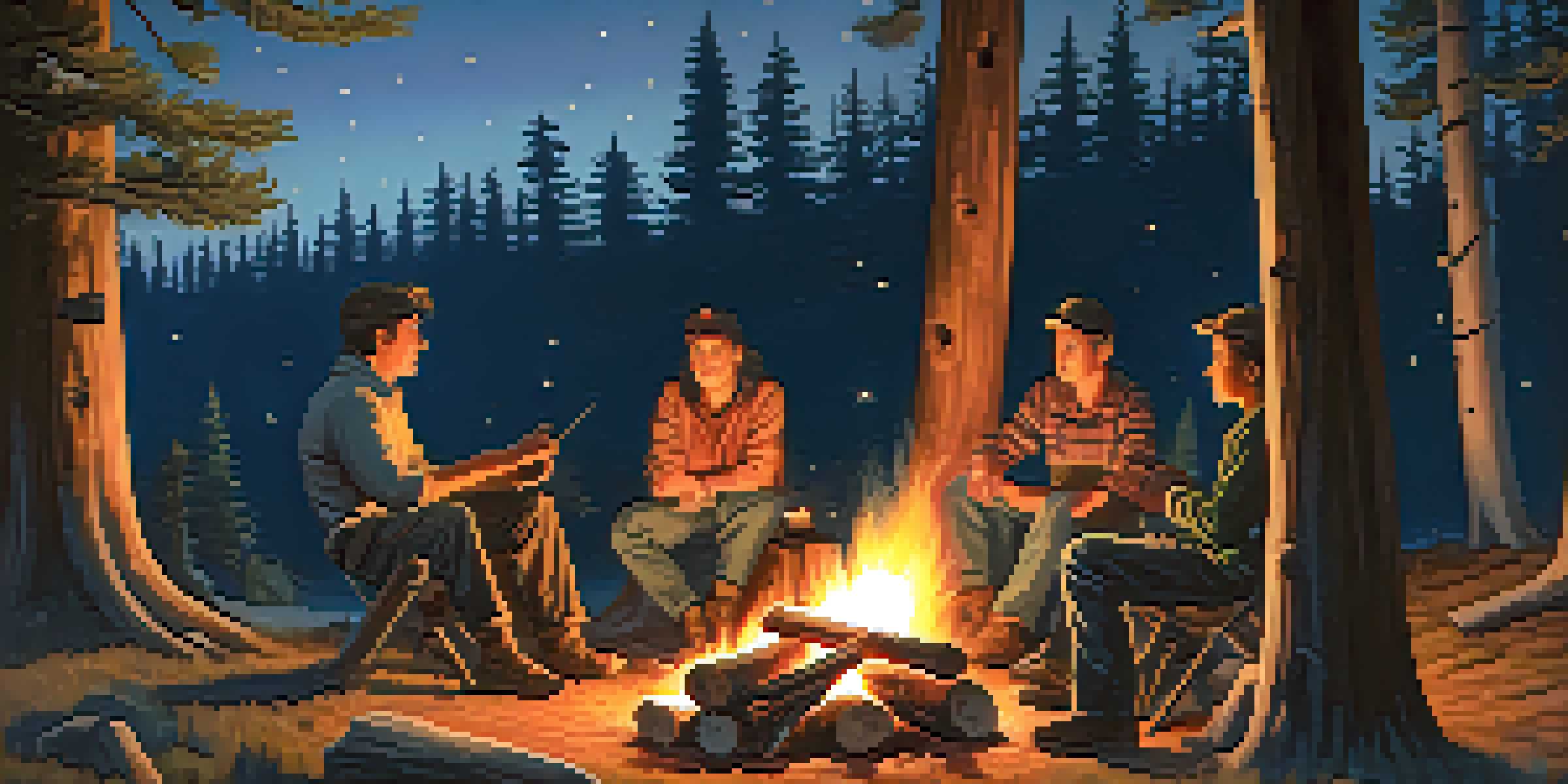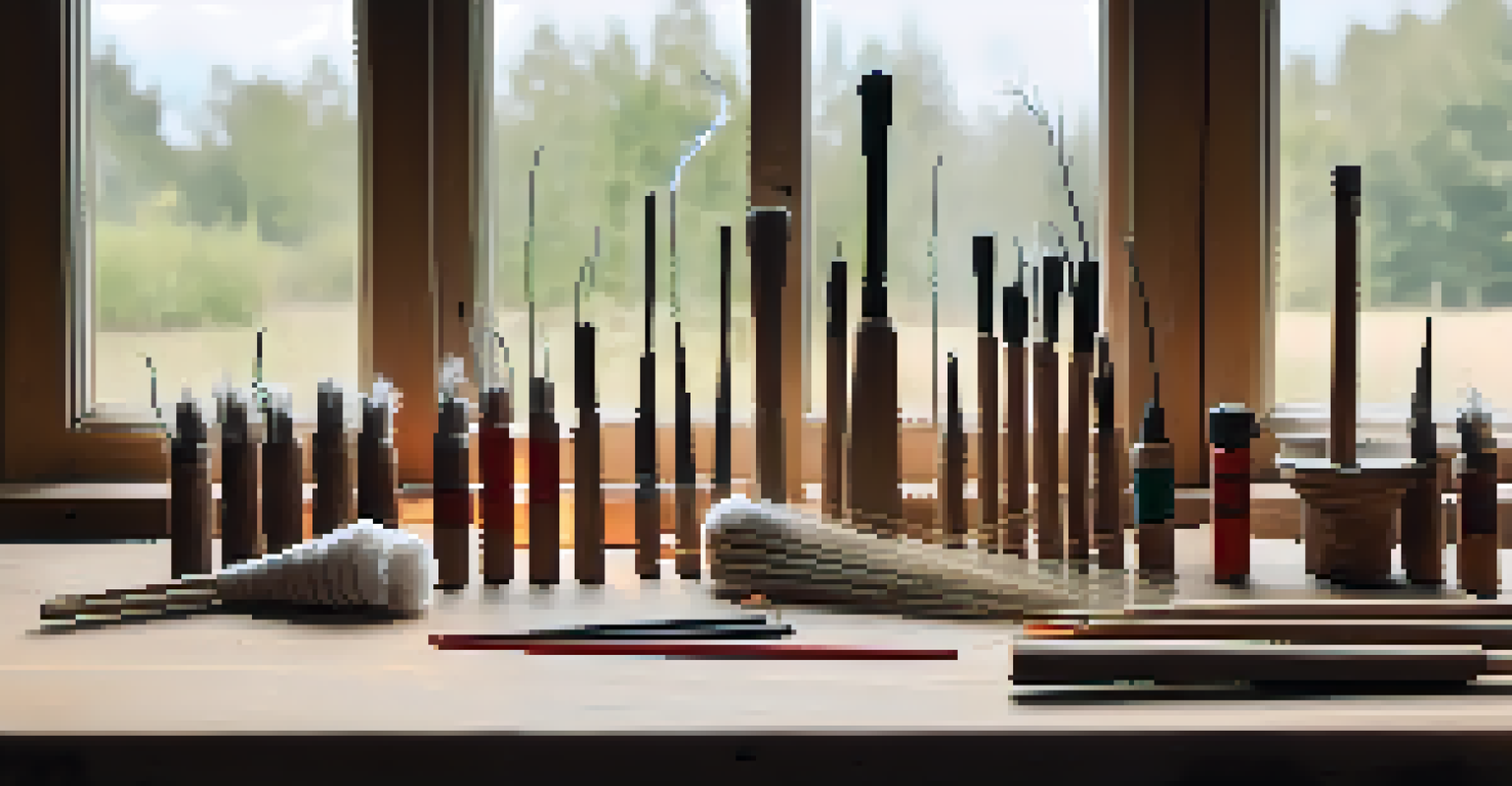Fire Making Skills: How to Start a Fire in Any Condition

Understanding the Importance of Fire in Survival Situations
Fire is often referred to as humanity's oldest tool, and for good reason. It provides warmth, protection, and a means to cook food, making it essential in survival scenarios. Whether you're lost in the woods or camping with friends, knowing how to start a fire can be a game changer.
Fire is the most perfect of the elements, combining the best of all worlds: warmth, light, and the power to transform.
In addition to its practical uses, fire also has a psychological benefit; it brings comfort and a sense of security in the great outdoors. Just think about how a campfire can gather people together, creating a space for stories and connection. This social aspect of fire can help bolster morale when faced with challenges.
Moreover, mastering fire-making skills can enhance your outdoor experience. It allows for greater independence, whether you're embarking on a solo adventure or leading a group. The ability to create fire can empower you and elevate your confidence in navigating the wild.
Essential Tools for Fire Making: What You Need
Before you can start a fire, it's crucial to gather the right tools. While you can go primitive with just sticks and stones, having a fire starter, matches, or a lighter can make the process much easier. Portable fire starters, like magnesium blocks or flint and steel, are also great options to have on hand.

In addition to fire starters, you'll need tinder and kindling to get the flames going. Tinder is typically made up of small, dry materials like dried grass, leaves, or cotton balls, while kindling consists of slightly larger pieces such as small twigs or bark. Having these materials ready can significantly speed up the fire-starting process.
Fire: Essential for Survival
Fire provides warmth, protection, and comfort, making it a vital skill in survival situations.
Lastly, don’t forget about safety gear, like gloves and a fire blanket, especially if you’re using flammable liquids. It’s always better to be prepared than to find yourself in a sticky situation. Having the right tools and materials is the first step toward becoming a proficient fire maker.
Choosing the Right Location for Your Fire
Selecting the right spot to build a fire is vital for both safety and effectiveness. Look for a flat, clear area away from overhanging branches and dry grass, as these can easily catch fire. Ideally, the location should be sheltered from the wind to help maintain your flames.
The fire you kindle for your enemy often burns yourself more than them.
It's also important to consider the ground beneath where you'll start your fire. A fire ring or a bed of rocks can help contain the flames and prevent them from spreading. If you're in a more primitive setting, dig a shallow pit to create a safe fire area.
Lastly, always check local regulations regarding campfires, as some areas may have restrictions in place due to fire hazards. Respecting these guidelines not only protects the environment but also ensures a safer experience for you and others nearby.
Gathering Firewood: Types and Techniques
When it comes to gathering firewood, understanding the types of wood available can make a big difference. Hardwoods, like oak and maple, burn longer and hotter, while softwoods, such as pine and spruce, ignite quickly but burn out faster. A mix of both can provide a steady, reliable fire.
As you gather firewood, remember to collect three sizes: tinder (small), kindling (medium), and fuel wood (large). This layered approach ensures that your fire has the right materials to grow from a small flame to a roaring fire. Always look for dry wood, as wet or green wood will be difficult to ignite.
Gathering Proper Firewood Matters
Understanding the types of firewood and gathering the right sizes ensures a steady and effective fire.
Additionally, when collecting wood, be mindful to only take what you need and avoid damaging the surrounding environment. Leave no trace by taking care not to disturb wildlife habitats or remove wood from protected areas. Responsible gathering is part of being a good steward of nature.
The Fire Triangle: Basics of Fire Creation
To successfully start a fire, you need to understand the fire triangle, which consists of heat, fuel, and oxygen. Each element is crucial; without heat, the fuel won't ignite, and without oxygen, the fire will suffocate. Recognizing this triangle can help you troubleshoot any fire-making challenges.
When lighting a fire, you typically start with tinder, which needs a spark or flame to ignite. Once the tinder catches, it generates heat, allowing the kindling to catch fire. As the flames grow, they consume more fuel wood, and with enough oxygen, the fire can sustain itself.
This concept emphasizes the importance of maintaining airflow around your fire. Arranging your wood in a teepee or log cabin structure can help improve oxygen flow, making it easier for your fire to thrive. Understanding the fire triangle is key to mastering fire-making skills.
Different Fire Starting Methods: Pros and Cons
There are several methods to start a fire, each with its own advantages and disadvantages. Using matches or a lighter is the most straightforward approach, but it requires having them on hand and keeping them dry. On the other hand, more primitive methods like bow drills or flint and steel can be rewarding but require practice and patience.
Another popular method is the use of fire starters, such as cotton balls soaked in petroleum jelly or commercial products designed for quick ignition. These can significantly reduce the time and effort needed to start a fire, especially under challenging conditions. However, they may not always be available when you need them.
Safety in Fire Maintenance
Properly maintaining and extinguishing your fire is crucial for safety and environmental protection.
Ultimately, the best fire-starting method depends on your situation and skill level. Experimenting with different techniques can not only help you find what works best for you but also make your outdoor adventures more enjoyable. Being versatile in your fire-starting skills is a critical component of outdoor survival.
Maintaining and Extinguishing Your Fire Safely
Once your fire is blazing, maintaining it is key to enjoying its benefits. Keep an eye on the flames and add fuel wood as needed to keep the fire going. Remember to arrange the wood in a way that allows for good airflow, ensuring that the flames have the oxygen they need to thrive.
When it's time to extinguish your fire, do so safely and responsibly to prevent any accidents. Start by allowing the fire to burn down to ash, then sprinkle water over the ashes and stir until everything is cool to the touch. This process ensures that no embers remain that could reignite.

Lastly, always follow the principle of 'leave no trace.' Check your fire area for any remaining debris or materials, and clean up properly. Being diligent about extinguishing your fire not only protects the environment but also ensures the safety of future visitors to the area.